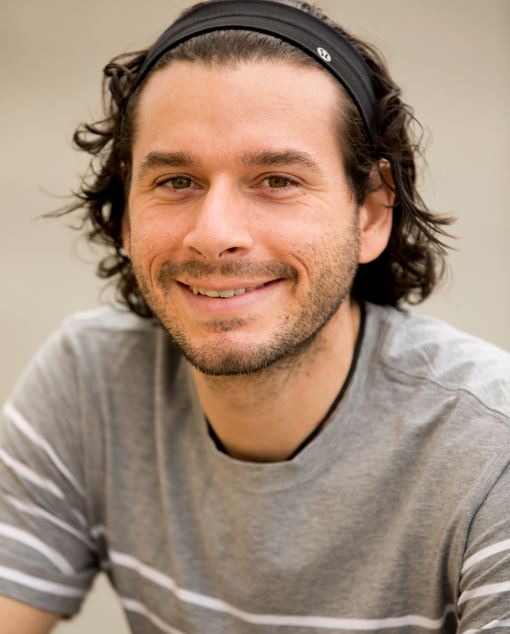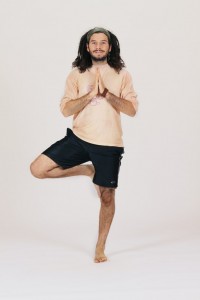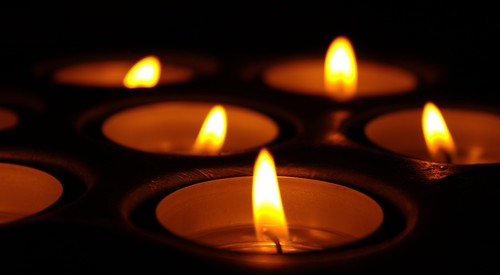Time is running out on finding the perfect holiday gift for those you love. However, it is never too late to offer your loved one the best gift of all- your complete, undivided and full attention and presence this holiday season. Thich Nhat Hanh, a wise Buddhist teacher noted: “the most precious gift we can offer others is our presence. When mindfulness embraces those we love, they will bloom like flowers.” Sounds poetic and beautiful, but what does he mean by presence and mindfulness? And how can I offer my presence as a gift to others? In this article I aim to describe what this type of mindful presence is, and offer a meditation practice to facilitate greater presence and aliveness this holiday season.
It is easy to underestimate the power of offering more of yourself as a gift to others. But perhaps deep down, it is what we all truly want of those we love and haven’t yet figured out how to ask for it, offer it, or to receive it. Attention and presence truly are precious jewels. Besides, if you have the money, the time, and the courage to brave the shopping malls, its a piece of cake to swipe the credit card and buy the latest and best iPhone, flat screen TV, gaming system or yoga gear. Don’t get me wrong, these are all awesome gifts, and you certainly need not return them! As yogis and yoginis however, we are continuously called toward a greater depth of self-examination and transformation. The holiday season provides us with an excellent opportunity to put our practices into action. Perhaps you have wondered how many moments of your life you missed, or didn’t quite fully embrace because you were thinking about something else or multitasking. This is likely a common experience for many of us and we are certainly not at fault considering how fast everything moves around us. In our era of distraction, it truly is challenging to simply be calm, present, and fully attentive in our moments as they are happening.
Presence seems rather straight forward at its most basic physical level. According todictionary.com, presence is merely “the state or fact of being present, as with others or in a place.” In a psychological context, presence is much more and carries important meaning. Presence in this context, is about being emotionally connected through empathy and compassion. To be present is to join the other with a heart wide open, the senses wide open, and our “third eye” focused on the inherent, divine beauty and grace in the other. And remembering that same divinity resides in all of us, including you! Our presence is linked to our attention and they seem to be fluid. They naturally drift from being oriented toward the external environment and our internal experience. We can learn how to train our attention to become more focused and thereby increase our sense of being present in our lives. Mindfulness and yogic practices are particularly effective at training and focusing attention.
Mindfulness is a wholesome state of non-judgmental present moment awareness. In a mindful state, one is intentionally focused in the here and now, and aware of inner emotional and physical states, as well as the external environment. Mindfulness is about greeting the world and our unfolding experiences with open arms. As we practice and grow, we learn to be able to be present to our experiences, without disconnecting, or distracting ourselves from our joy or our suffering. While we are focusing on increasing our connection to the present moment, it is also important to recognize that in extremely stressful situations, disconnecting may actually be an appropriate and adaptive response. So, how do we put these ideas into practice?
We can deliberately cultivate mindful presence through the meditation practice described below. I invite you to treat this practice as an experiment, engaging your curiosity and wonder, and not being concerned about the “right way” to meditate. Simply allow what happens in the practice to happen, and remain accepting and compassionate towards yourself. I have broken the meditation down into steps that you can follow. You can decide how long to stay with each step in the process. A couple of minutes with each step is a great way to begin.
Meditation for Presence
1. Establish yourself in a comfortable seated posture and close the eyes. Take a moment and quiet down by bringing your full awareness onto the breath. Inhale and lengthen through the spine, draw the shoulders back and let them release down as you exhale.
2. In this step, bring your full awareness onto the breath. Observe the air flowing in and out through the nose. Allow one breath to flow into the next. Continue in this way for several minutes. Focusing on the breath will build mindful presence by providing you with a direct connection to the body. The body perpetually lives in the present moment through its location in space and time. Know that the mind will wander, and when it does, softly acknowledge this, and come back to the breath. When you feel ready to transition to the next step, let the awareness of the breath move to the background and turn your attention to the body.
3. In this step, we will bring full awareness to the body. As you breathe in, become aware of the connection of the body to the earth. Scan your awareness from the base of the body to the top of the head. Sense a straight line of energy flowing through you from the earth to the sky. Take note of the sensations as they flow through the body like water. Even pay attention to the taste in your mouth and air on your skin. Notice how focusing on sensations cultivates presence. Spend a few minutes observing the dance of sensations, just saying “yes” to whatever is present. When you are ready, allow the awareness of sensation to move to the background and turn your attention to the thoughts in the mind.
4. In this step, bring your attention to your thoughts. Compassionately acknowledge thoughts, images, and emotions that arise. Notice how quickly the mind may grasp and cling to the thoughts. When you notice the mind has drifted, kindly acknowledge that the mind has wandered. Gently come back to the awareness of the thought process, rather than the content of the thoughts. Watch how thoughts give rise to memories, anticipation, or other emotions such as happiness or sadness. Perhaps there is something seductive about the positive thoughts. See if you can equally accept the positive, negative, and neutral thoughts. Remember, you can put aside anything that arises that feels overwhelming. Do what you need to do in order to take care of yourself. Practice here for a few minutes, and when you are ready to transition, allow the thoughts to move to the background and become aware of the sounds around you.
5. In this step, become aware of the sounds around you. As best as you can, refrain from becoming caught up in the labeling of the sounds. Rather, stay with awareness of sounds as they are. Spend a few minutes resting in the sea of sounds. Sounds are always happening right now. We cannot hear sounds from the past or the future. Thus, awareness of sound anchors us into the present-moment. Spend a few minutes here, and when you are ready to transition, allow the awareness of sounds to move to the background. Let go as you exhale.
6. Spend a few minutes, preparing to close the practice. Allow your attention to freely move between the breath, the body, thoughts, mental images, emotions, and sounds. Just allow awareness itself to decide where to go based upon what is most prevalent in your field of awareness. Spend a few minutes observing all of the splendor of the senses and your present moment experience. It truly is a magnificent symphony.
7. When you are ready, intentionally bring your practice to a close by deepening the breath and opening the eyes as you exhale. Bring the hands to the heart and thank yourself for taking this time to practice and awaken.
You may be wondering, what lessons can we take away from this experiment? A major lesson is one of humility in realizing that it truly is hard to stay fully present, even when directing all of our efforts onto this type of awareness. Considering the challenge of staying present in a formal meditation, reflect on how challenging it is to offer our full attention to our partners, spouses, parents and children amid the chaos of our everyday lives. Think about how our attention is constantly divided between people, cell phones, PDAs, and other distractions from the environment. It is important to acknowledge the challenge, and have compassion for ourselves and others, realizing that everyone is doing their best. By practicing, we develop the ability to notice when we have drifted away, and by becoming aware, we are able to more quickly reground ourselves in the present tense. Rest assured that with continuous practice and by focusing your attention on building this type of presence, you will become more awake, more alive, and more able to give and receive this beautiful gift of presence. In entering the sacred space of the present moment, we are able to remember, as Kabir once noted, that “this place where you are right now, God circled on a map for you.” By accepting ourselves as we are, we can then truly compassionately join the other where they are and be lovingly present for them. It is in this shared space that we recognize we are all destined to awaken and journey through the vast mysteries of existence together.
I wish you abundant joy over the holidays, the New Year and on your path of awakening. For further love and support on your path, please celebrate yoga with me at my Restorative classes throughout the bay area. Check out my schedule at johnyoga.com.



